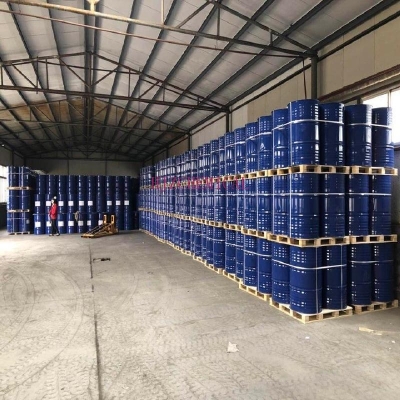-
Categories
-
Pharmaceutical Intermediates
-
Active Pharmaceutical Ingredients
-
Food Additives
- Industrial Coatings
- Agrochemicals
- Dyes and Pigments
- Surfactant
- Flavors and Fragrances
- Chemical Reagents
- Catalyst and Auxiliary
- Natural Products
- Inorganic Chemistry
-
Organic Chemistry
-
Biochemical Engineering
- Analytical Chemistry
- Cosmetic Ingredient
-
Pharmaceutical Intermediates
Promotion
ECHEMI Mall
Wholesale
Weekly Price
Exhibition
News
-
Trade Service
Global Chemicals Quick Review
The two major M&A deals in the agrochemicals industry are nearing completion
Recently, two of the top three M&A transactions in the global agrochemical industry are nearing completion
.
DuPont signed an agreement to ease European concerns about its merger with Dow Chemical, and ChemChina has begun divesting assets to meet regulators' demands
for its acquisition of Syngenta.
To obtain EU consent for its merger with Dow Chemical, DuPont will sell most of its crop protection business to FMC in return for receiving $1.
6 billion in cash and FMC's health and nutrition business
.
However, the merger between DuPont and Dow Chemical has not yet been approved
by U.
S.
antitrust authorities.
At the same time, regulators are asking ChemChina's ADAMA General Pesticides subsidiary to sell some overlapping businesses
that compete with Syngenta in the U.
S.
and EU markets.
Deepwater oil projects may compete with U.
S.
shale oil
The global deepwater oil and gas industry is emerging from the downturn, with BP's Mad Dog 2 project and Shell America's Kaikias project in the US Gulf of Mexico and Noble Energy's Leviathan project in the Mediterranean Sea of Israel approved so far this year, with a total deepwater oil project of 5 billion barrels
.
Wood Mackenzie says the cost of deepwater oil and gas projects worldwide has fallen by more than 20 percent
since 2014.
Under the assumption of an internal rate of return of 15%, the current break-even point is $50/barrel
for oil prices.
For comparison, the break-even point of $50 per barrel or less for the 15 billion barrels of shale oil resources that have not yet been explored and developed in the United States is $50 per barrel or less
under the same assumption.
The cost of U.
S.
shale oil is increasing, while the cost of deepwater oil projects continues to fall
.
Therefore, in the near future, deepwater oil and gas projects will be able to compete with
US shale oil.
North American Class III base oil production capacity will expand rapidly in the coming years
North America is the world's largest importer of API Group III base oils, but production in the region is woefully
small.
As demand for Group III base stocks in North America continues to grow, many industry analysts predict rapid expansion
of Group III base oil production capacity in North America in the coming years.
In order to make up for the large gap between supply and demand of Group III base oils, North America is mainly the United States that imports a large amount of Group III base oils
from some countries.
According to Ames, between September 2015 and August 2016, the United States imported approximately 1.
1 million mt of Class III base oil, including 469,000 mt from South Korea, 389,000 mt from Qatar and 100,000 mt
from Bahrain.
Some market watchers say North America will eventually add more Class III base oil capacity
, given high shipping costs.
Ames forecasts that North America will have a four-fold capacity of 800,000 mt of Class III base oils by 2021, although North America will continue to import large amounts of Class III base oils to meet growing demand
.
U.
S.
biodiesel imports hit a record high
U.
S.
biodiesel and renewable diesel imports in 2016 were nearly three times
as much as domestic production in 2010.
U.
S.
imports of biodiesel and renewable diesel exceeded 915 million gallons in 2016, including 692.
87 million gallons of biodiesel and 222.
77 million gallons of renewable diesel
, far more than any previous year, according to U.
S.
Energy Information Administration (EIA) import data.
Despite the significant increase in imports, U.
S.
biodiesel production also hit a record high
in 2016.
According to EIA data, U.
S.
biodiesel production in 2016 increased by a significant 23.
5% from 2015, from nearly 1.
27 billion gallons in 2015 to nearly 1.
57 billion gallons
.







